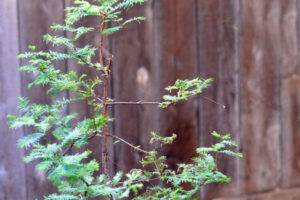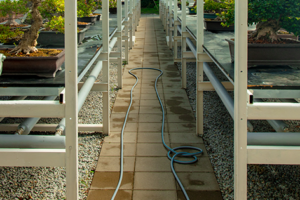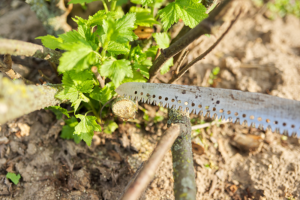Cascading bonsai is a style of bonsai that is characterized by a tree with a trunk that slopes downward and branches that flow downward, resembling a waterfall. This style is meant to mimic the natural shape of trees that grow on cliffs or mountainsides, where they are subjected to strong winds and downward-flowing water.
Cascading bonsai can be achieved with a variety of tree species, but some of the most popular choices include junipers, pine trees, and various types of flowering plants. The key to achieving the cascading style is to choose a tree with flexible branches that can be easily shaped and trained.
One of the first steps in creating a cascading bonsai is to choose the right container. It is important to choose a container that is deep enough to accommodate the downward-flowing branches of the tree, as well as wide enough to give the tree room to spread out. The container should also have a drainage hole to prevent the roots from becoming waterlogged.
Once you have chosen the right container and tree species, the next step is to prune the tree. Cascading bonsai require regular pruning to maintain their shape and encourage new growth. When pruning, it is important to remove any dead or damaged branches, as well as any branches that do not fit with the desired shape of the tree.
After pruning, the next step is to train the branches of the tree into the desired shape. This can be done using a variety of techniques, such as wiring and bending. Wiring involves wrapping wire around the branches of the tree and then carefully bending them into the desired shape. Bending, on the other hand, involves gently applying pressure to the branches to shape them.
Once the branches have been trained into the desired shape, it is important to fertilize the tree to encourage healthy growth. Cascading bonsai should be fertilized every two to four weeks during the growing season, using a balanced fertilization that is formulated specifically for bonsai.
One of the challenges of caring for cascading bonsai is ensuring that the tree receives enough water. Because the branches of the tree are oriented downward, it can be difficult to water the tree evenly, which can lead to dry or overwatered areas. To avoid this problem, it is important to water the tree thoroughly and regularly, and to check the soil moisture level frequently to ensure that the tree is getting the water it needs.
In addition to watering, cascading bonsai also require regular repotting to ensure that the roots have enough space to grow and the tree receives sufficient nutrients. Repotting should be done every two to three years, using a soil mixture specifically designed for bonsai.
Cascading bonsai can be a rewarding and challenging hobby, but with proper care and attention, they can thrive and provide a beautiful, low-maintenance addition to any home or garden. If you are interested in creating a cascading bonsai of your own, there are many resources available to help you get started, including online tutorials, books, and workshops. With a little bit of patience and practice, you can create a stunning cascading bonsai that will be a source of pride and enjoyment for years to come.







Leave a Reply
Your email is safe with us.
You must be logged in to post a comment.